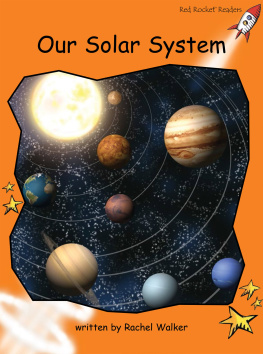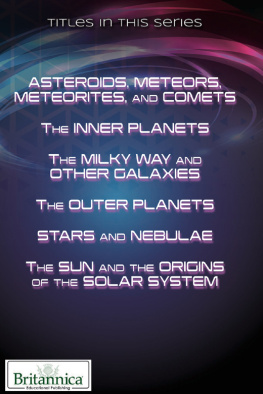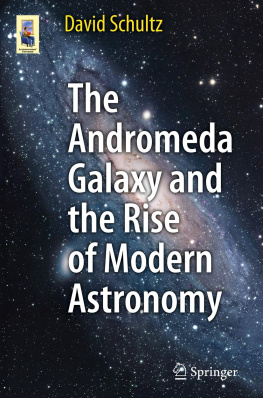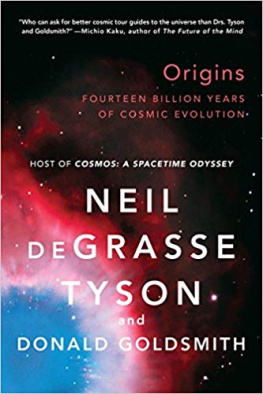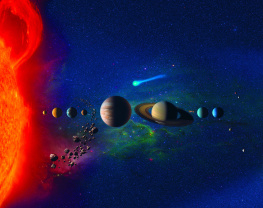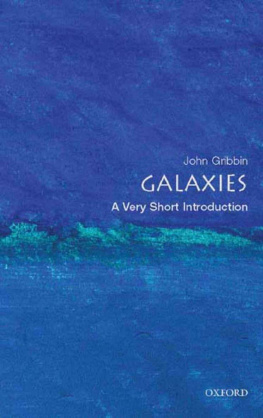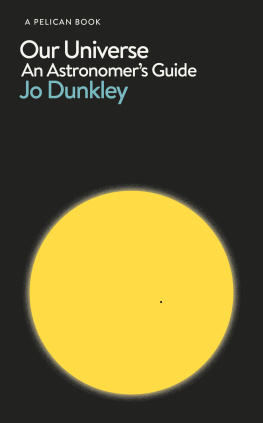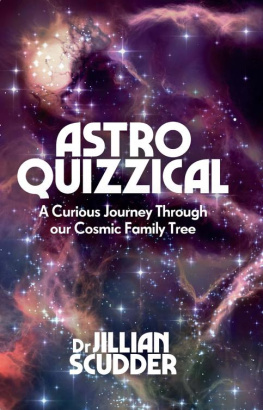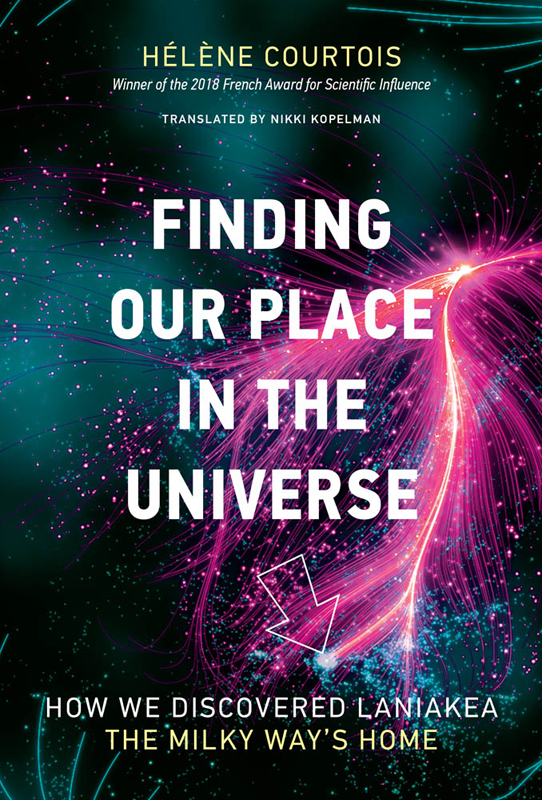All rights reserved. No part of this book may be reproduced in any form by any electronic or mechanical means (including photocopying, recording, or information storage and retrieval) without permission in writing from the publisher.
This book was set in Stone Serif by Westchester Publishing Services. Printed and bound in the United States of America.
Names: Courtois, Hlne (Hlne Di Nella), author.
Title: Finding our place in the universe : how we discovered Laniakea, the Milky Ways home / Hlne Courtois.
Description: Cambridge, MA : The MIT Press, [2019] | Includes bibliographical references and index.
Identifiers: LCCN 2018043980 | ISBN 9780262039956 (hardcover : alk. paper)
Subjects: LCSH: Milky Way. | Superclusters. | Galaxies. | Celestial mechanics.
Classification: LCC QB857.7 .C68 2019 | DDC 523.1/12--dc23 LC record available at https://lccn.loc.gov/2018043980
Contents
List of Figures
Examples of galaxy morphology: elliptical (ESO 325), irregular (NGC 1427A), spiral (M83).
From the solar system to the observable universe: you are here! (Also plate 1.)
The electromagnetic spectrum.
Views of Orion, in the night sky and in 3D.
Illustration of the parallax method, after Bessel.
Representative distances in the universe.
The Milky Way, as seen by Caroline and William Herschel.
Absolute luminosity and apparent brightness.
Close-ups of the Local Universe.
Valrie de Lapparent delivering a talk on large galaxy structures, including the Great Wall, at a 2009 conference.
One of my first maps showing the Cocoon.
Polynesian navigation.
Spectral transitions in the course of a photons emission and absorption. (Also plate 2.)
Hubbles Law.
The expansion of raisin bread.
Using the Doppler effect in observational cosmology. (Also plate 3.)
Total velocity, recessional velocity, and peculiar velocity of a passenger running inside a train.
Our large-scale motion in the universe.
Enlargement of an absorption line in an elliptical galaxy.
The dynamic map constructed by the Seven Samurai in 1986 (from Alan Dressler, Voyage to the Great Attractor [New York: Alfred A. Knopf, 1994]).
View of the Siding Spring observatory in Warrumbungle National Park, New South Wales, Australia.
Obtaining spectral data with FLAIR.
What is the fate of a universe in accelerated expansion?
The main telescopes used to create our modern data sets. Left to right, top to bottom: Parkes (Australia), Green Bank (West Virginia), Mauna Kea (Hawaii), Spitzer (NASA), Hubble (NASA), Arecibo (Puerto Rico). (Also plate 4.)
Broadening of the hydrogen emission line from a spiral galaxy. (Also plate 5.)
To measure the distance of a spiral galaxy using the Tully-Fisher method, we need to observe using two types of telescope: a radio telescope and an optical telescope.
Spiral galaxies on parade. (Also plate 6.)
Different methods for estimating the distances of celestial objects.
Dynamic map created using the CF1 data set.
A representation of large-scale structures.
Our Cosmicflows-2 dynamic map of radial velocities. The arrows indicate the direction of movement. (Also plate 7.)
Equations from Yehuda Hoffmans velocity reconstruction algorithm.
The importance of the Wiener filter.
Cosmic microwave background anisotropy. The map on top shows the dipole due to our galaxys motion; removing it allows us to detect the inhomogeneities due to primordial fluctuations (bottom map).
The purpose of visualization. (Also plate 8.)
Maps summarizing the steps in our method.
Evidence of our Laniakea Supercluster through a visualization from the CF2 dataset. (Also plate 9.)
Illustration of watersheds in hydrology.
The train analogy to help clarify Laniakeas future.
A new line in our cosmic address.
Laniakea enclosed in a glass cube.
An image of Laniakea projected onto a building faade, Lyon Festival of Light, 2014. (Also plate 10.)
The cosmic web obtained through a CLUES numerical simulation.
Time-lapse produced by a constrained simulation based on CF2. Here we can see the birth and development of our corner of the universe, from left to right at the ages of 500 million years, 6 billion, and 13.8 billion years. (Also plate 11.)
Absorption of electromagnetic waves by the earths atmosphere.
First map from the Cosmicflows-3 generation. Here we can see that the cosmic flows show the other watersheds surrounding Laniakea. (Also plate 12.)
Illustration of the cosmological principle.
The sizes of the four Cosmicflows programs. (Also plate 13.)
Photos and artists impression of the telescopes of the future. Top to bottom: ASKAP (Australia), MeerKAT (South Africa), Euclid (European Space Agency).
From left to right: Daniel Pomarde, Yehuda Hoffman, Hlne Courtois, Brent Tully, Stefan Gottlber.
Family photo!
Foreword
Whats a cosmographer? A cosmographer draws maps of the universe. Thats how Hlne Courtois describes her work: she makes diagrams of space. Theres a further temporal dimension, since, in the field of astronomy, traveling great distances also means traveling in time. Fasten your seatbelts, then. This book will take us from our immediate surroundings to destinations 500 million light-years away.
The hundreds of thousands of galaxies all around us are not distributed at regular intervals. Instead, they form dense clusters separated by vast, empty expanses and joined by galactic filaments, like an immense spiderweb. A map represents this cosmic network in two dimensions. So how is a third dimensionthat is, a measure of depthobtained?
The narrative proceeds briskly as we follow the author on her travels across the globe to work with different kinds of technology, first optical and then radio telescopes. Her research program has required collaboration with astronomers all over the world. Surfing the cosmic waves, Hlne Courtoiss team watches day and night, and in every time zone. In 2009, for instance, she didnt sleep much at all because she was busy conducting 480 nighttime observations.
Devising a three-dimensional map of our Local Universe plays a key role in this process. Extremely sophisticated software is required in order to account for various aspects of observation, as well as the lack of data for certain regions. If galaxy velocities are unavailable, they can be reconstructedlike a mosaic in Pompeii missing a few tiles. Algorithms based on models and simulations of dark matter, calculation of optimal probabilities, and so-called Wiener filters that minimize noise enable researchers to figure out data they dont have.
All this intensive labor has yielded a map of our Local Universe and its watersheds: the Laniakea Supercluster. Remarkably, we occupy a position at the edge of the cluster bordering the Great Void. Does this herald the discovery of the Great Attractor? The reader will find out in due time.


